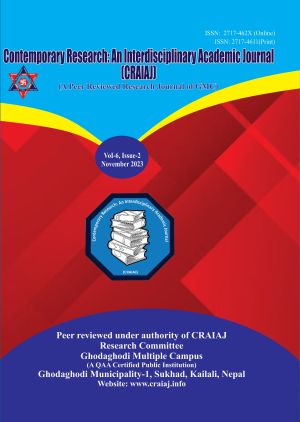Impact of Emotional Intelligence on Job Performance: Evidence from the Employees of the Commercial Banks in Dhangadhi
DOI:
https://doi.org/10.3126/craiaj.v6i2.60258Keywords:
Emotional quotient, Intelligence quotient, Motivation, Self awareness, Self-regulation, Social skillsAbstract
The ability to recognize our feelings and those of others and manage emotions well in ourselves is the major contributing factor to employees’ performance. Emotional intelligence is relevant for predicting employees’ work performance because most jobs require the ability to manage emotions. The objective of the study is to examine the impact of emotional intelligence on employees’ performance in the commercial banks in Dhangadhi City. This study adopted quantitative research design and used descriptive as well as inferential statistical tool to analyze the data. 100 questionnaires were randomly administered to respondents out of which 82 were returned that were used for analysis. Regression analysis was used to analyze the collected data. The study revealed that there was a significant relationship between employees’ emotional intelligence and employee’s job performance. The coefficient of determination between EI and employees job performance was 82 percent. Similarly, the regression analysis also depicted that he emotional intelligence factors positively impacts the performance of employees in the organization. Hence, it is recommended that organization should introduce various training programs and developmental activities related to EI in their workplace for employees at every level in order to create better management of talent and performance on the one hand, and more effective team outcomes, service outcomes and relationship outcomes on the other.
Downloads
Downloads
Published
How to Cite
Issue
Section
License
Copyright (c) 2023 Ghodaghodi Multiple Campus, CRAIAJ

This work is licensed under a Creative Commons Attribution-NonCommercial-NoDerivatives 4.0 International License.
© Ghodaghodi Multiple Campus, Research Committee, RMC

This work is licensed under a Creative Commons Attribution-NonCommercial-NoDerivatives 4.0 International License. This license enables reusers to copy and distribute the material in any medium or format in unadapted form only, for noncommercial purposes only, and only so long as attribution is given to the creator.




